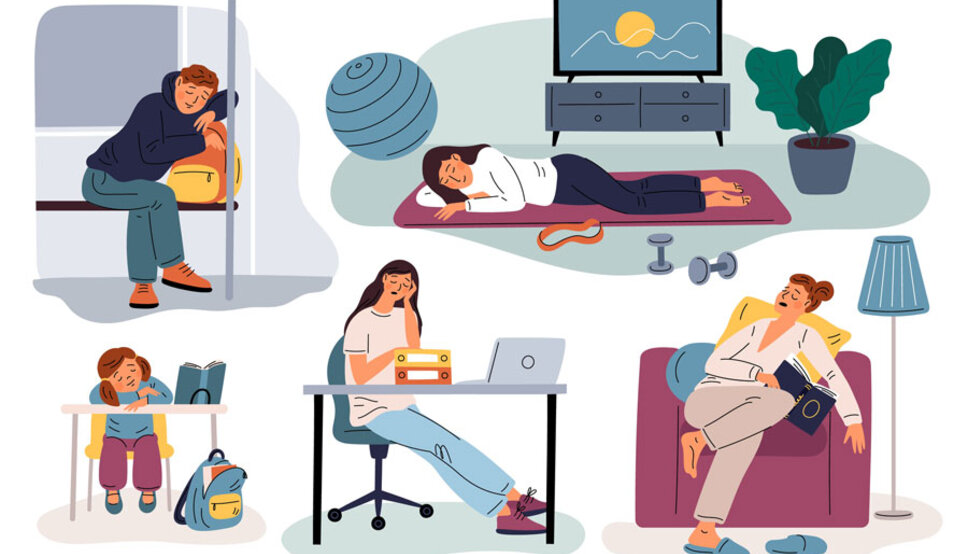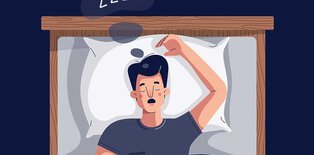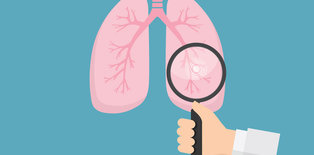Narcolepsy Causes, Symptoms, and Treatment Options

Narcolepsy is a fairly well-known but relatively uncommon neurological disorder, most noted for a patient's inability to stay awake throughout the day. Learn more about this condition and how it is treated.
What is narcolepsy?
Narcolepsy is a chronic neurological disorder that results mainly in excessive daytime sleepiness that interferes with daily activities and tasks. In some cases, narcolepsy is associated with sleep attacks and sudden paralysis episodes (called cataplexy).
There are two types of narcolepsy, Type 1 and Type 2.
Type 1 narcolepsy
This type of narcolepsy is associated with cataplexy, a sudden and usually short-lived reduction in muscle strength triggered by strong emotions such as terror, laughter or excitement. It can range between a severe collapse to mild, barely perceptible weakness in some muscles in the face or knees. Cataplexy is one of the defining features of type 1 narcolepsy and is treated as part of a comprehensive management plan for narcolepsy.
Type 2 narcolepsy
This type of narcolepsy is not associated with cataplexy, and people with this type may have less severe symptoms.
What causes narcolepsy?
The true cause of narcolepsy is still unclear, though it is an area of active research. Some researchers think there may be genetic and inflammatory causes. We do know that type 1 narcolepsy is typically associated with decreased levels of a neurotransmitter called hypocretin (sometimes referred to as "orexin") that is responsible for wakefulness and sleep regulation.
While there is no clear, universal genetic cause for narcolepsy at the moment, the majority of type 1 narcolepsy patients do carry a specific human leukocyte antigen (HLA) allele. However, 25 percent of patients that carry that genetic variation do not have narcolepsy, which suggests there are other factors that play a role in the development of the disorder.
What are some symptoms of narcolepsy?
The main symptom of narcolepsy is excessive daytime sleepiness, though there are a few other symptoms.
Excessive daytime sleepiness
People with narcolepsy often feel extremely fatigued throughout the day and can fall asleep almost without knowing it. They may find themselves falling asleep while doing a task, when they're bored, or even when they're talking with someone.
Automatic behaviors
In some cases, people with narcolepsy will engage in automatic behaviors, in which they continue doing a task while they briefly fall asleep. For example, a person with narcolepsy may fall asleep while typing out an email and continue typing (though probably not very well). Once they wake after a short while, they will generally have no recollection of continuing to do the task.
Sleep paralysis or hallucinations
Some people with narcolepsy may experience sleep paralysis or hallucinations as they're falling asleep or waking up. Sleep paralysis is a moment when the person is awake but unable to move or speak, and it can be a scary feeling. People can also experience sleep paralysis without being narcoleptic. Hallucinations may happen during a moment of sleep paralysis, or they could happen without sleep paralysis when a person is falling asleep or waking up.
Faster move to rapid eye movement (REM) sleep
For people without narcolepsy, it can take around 60 to 90 minutes after falling asleep to reach the rapid eye movement (REM) stage of sleep, which is the time when most dreaming happens. People with narcolepsy often reach this stage much faster and can reach it during the day as well.
How is narcolepsy diagnosed?
To diagnose narcolepsy, a sleep medicine specialist will conduct a careful clinical evaluation, exclude other potential causes of sleepiness, and conduct sleep testing that is done during night and daytime.
Narcolepsy is typically diagnosed in the teenage to early adulthood years. It is rare for narcolepsy to start before the age of 5 or after the age of 40.
How is narcolepsy treated?
There is no cure for narcolepsy, but there are many treatment options to help patients manage their symptoms and lead full, active lives.
Lifestyle modifications can help patients with narcolepsy to a point. These modifications may include a healthy sleep routine, daily scheduled naps, avoiding substances that can result in increased drowsiness, choosing work that does not include operating heavy machinery, choosing a place to live that is close to work to avoid long drive times or working remotely.
Medications can also help patients stay awake. There are wakefulness-promoting medications such as Ritalin or Adderall, antidepressants, cataplexy reducing medication (such as sodium oxybate), and medications that affect certain neurotransmitters, including histamine and hypocretin.
Patients with narcolepsy should meet regularly with their doctors to discuss any changes in sleep patterns or symptoms.
If you are having trouble staying awake throughout the day or have other signs of a sleep disorder, talk to your primary care provider about a referral to the Sleep Center at Morton Hospital. Our sleep medicine specialists can provide testing and treatment guidance for narcolepsy as well as other sleep-related concerns. Visit our website or call 508-880-0713 to learn more.
About the Author:
Imad Bahhady, MD
Dr. Imad Bahhady is a board-certified physician and medical director of the Sleep Center at Morton Hospital. He specializes in critical care, as well as internal, pulmonary and sleep medicine.
Find a Doctor

The right provider is in our network
Search more than 1,200 providers in our network.



